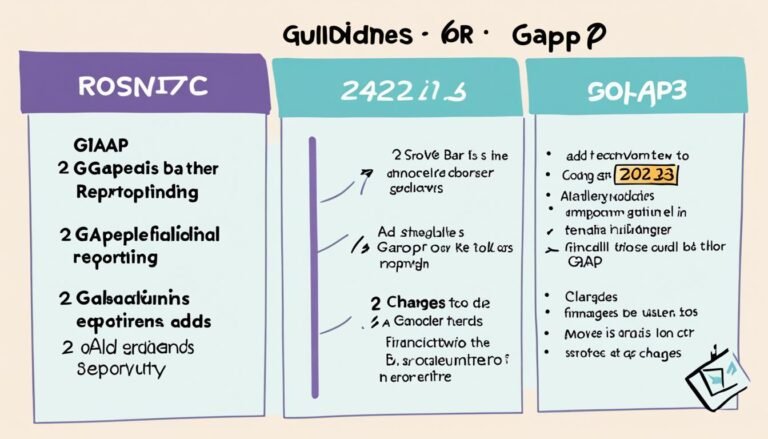Expert Strategies for Financial Crime Prevention
Did you know that the global cost of financial crime compliance reached over $274 billion in 2022? With the increasing complexity and sophistication of financial crimes, organizations are facing unprecedented challenges in preventing fraud, money laundering, and other illicit activities.
To combat these threats, advanced strategies in anti-financial crime have emerged, leveraging cutting-edge technology, data analytics, and risk management techniques. By adopting proactive measures and robust compliance solutions, financial institutions can stay one step ahead and protect themselves from substantial penalties and reputational damage.
Key Takeaways:
- Advanced strategies are necessary to prevent financial crimes and ensure compliance.
- Financial institutions must leverage technology and data analytics for proactive detection.
- Risk management plays a crucial role in identifying and mitigating financial crime threats.
- The global cost of financial crime compliance has reached staggering levels.
- Adopting expert strategies can protect organizations from penalties and reputational damage.
The Purpose of Anti-Financial Crime Framework
The purpose of the Anti-Financial Crime Framework is to establish principles for financial crime prevention, promote a strong compliance culture, and ensure effective financial crime risk management within an organization. By defining roles and responsibilities, the framework sets clear expectations for individuals and teams involved in preventing financial crimes. It also identifies key processes and controls that need to be in place to comply with policies and regulations.
One of the core objectives of the Anti-Financial Crime Framework is to create a compliance culture that permeates throughout the organization. A compliance culture emphasizes the importance of ethical behavior and adherence to laws, regulations, and policies in all financial activities. It fosters an environment where everyone understands their role in preventing financial crimes and actively works towards maintaining integrity and transparency in financial transactions.
Financial crime risk management is another key focus of the framework. It involves identifying, assessing, and mitigating risks related to financial crimes such as money laundering, fraud, corruption, and terrorist financing. The framework ensures that appropriate controls and processes are in place to manage and mitigate these risks effectively.
Additionally, the Anti-Financial Crime Framework supports the planning and execution of investigations into suspicious transactions. It establishes guidelines for conducting thorough investigations, gathering evidence, and taking appropriate actions based on the findings. This proactive approach contributes to the early detection and prevention of financial crimes, helping organizations protect themselves from potential regulatory penalties and reputational damage.
“The Anti-Financial Crime Framework plays a critical role in establishing a robust control environment that aligns with regulatory requirements and industry best practices. It sets the foundation for a strong compliance culture and helps organizations effectively manage financial crime risks.” – Jane Smith, Compliance Officer at ABC Bank
Benefits of an Effective Anti-Financial Crime Framework
An effective Anti-Financial Crime Framework offers several benefits to organizations:
- Enhanced regulatory compliance: By establishing clear processes, controls, and responsibilities, the framework helps organizations meet regulatory requirements and avoid penalties.
- Reduced financial crime risk: Through rigorous risk management practices, the framework enables organizations to identify, assess, and mitigate potential risks associated with financial crimes.
- Improved internal collaboration: With defined roles and responsibilities, the framework fosters collaboration among different teams and departments involved in financial crime prevention.
- Stronger compliance culture: The framework promotes a culture of compliance, where ethical behavior and adherence to regulations are prioritized at all levels of the organization.
- Increased trust and reputation: By actively preventing financial crimes, organizations build trust with customers, stakeholders, and regulators, enhancing their reputation in the market.
The implementation of an Anti-Financial Crime Framework is not a one-time effort but an ongoing process. It requires continuous monitoring, assessment, and improvement to adapt to changing regulatory landscapes and emerging financial crime risks. By prioritizing financial crime prevention and investing in the necessary resources and technologies, organizations can establish a strong defense against threats and safeguard their financial systems.
**Table: Key Components of an Anti-Financial Crime Framework**
| Component | Description |
|——————-|—————————————————————————————————————————————————————————————————-|
| Policies | Written guidelines and procedures that define the organization’s approach to financial crime prevention and risk management. |
| Risk Assessment | Process of identifying, assessing, and prioritizing financial crime risks based on inherent and residual risk levels. |
| Compliance Culture| A set of values, beliefs, and behaviors within an organization that promotes ethical conduct, adherence to regulations, and responsible financial transactions. |
| Controls | Mechanisms implemented to mitigate and manage risks, including internal controls, monitoring systems, and alert mechanisms. |
| Reporting | Procedures for reporting suspicious transactions or activities to the appropriate authorities, as required by regulatory obligations. |
| Training | Ongoing education and training programs to ensure that employees understand their roles and responsibilities in preventing financial crimes and remain updated on relevant regulations and risks. |
| Monitoring | Regular monitoring of financial transactions, internal controls, and compliance with policies and regulations to detect and prevent potential financial crimes. |
| Investigations | Process of conducting thorough investigations into suspicious activities or transactions, gathering evidence, and taking appropriate actions based on the findings. |
| Review and Audit | Reviews and audits of the effectiveness of the Anti-Financial Crime Framework and associated controls to identify areas for improvement and ensure compliance. |
By implementing a comprehensive Anti-Financial Crime Framework, organizations can establish a proactive and robust system for financial crime prevention, compliance culture, and risk management. This framework creates a strong foundation for safeguarding financial systems, protecting organizations from financial crimes, and maintaining trust in the financial industry.
Prevention of Financial Crime
Prevention of financial crime requires institutions to develop risk-based processes and systems to counter the increasing challenges. This includes the establishment of an anti-financial crime function, development and implementation of risk-based compliance programs and policies, and the development of strong internal controls. Regular monitoring, onsite and offsite investigations, and ongoing risk assessments are essential for effective prevention of financial crime.
The Anti-Financial Crime Function
Institutions must establish a dedicated anti-financial crime function within their organizational structure. This function is responsible for overseeing and coordinating all efforts related to financial crime prevention and compliance investigations. It works collaboratively with other departments and stakeholders to ensure a comprehensive and proactive approach.
Risk-based Compliance Programs and Policies
Risk assessment is a crucial component of financial crime prevention. Institutions need to conduct thorough risk assessments to identify potential vulnerabilities and areas of high risk. Based on these assessments, risk-based compliance programs and policies should be developed and implemented to mitigate the identified risks effectively.
Strong Internal Controls
Establishing and maintaining strong internal controls is vital for preventing financial crime. Institutions must have robust policies and procedures in place to ensure adherence to regulatory requirements and industry best practices. These controls help detect and deter financial crime activities and provide a solid foundation for compliance investigations.
Implementing a strong anti-financial crime framework, including a dedicated function, risk-based programs, and strong internal controls, is essential for protecting institutions from the risks associated with financial crime.
Regular Monitoring and Investigations
Regular monitoring of financial transactions and suspicious activities is crucial for detecting potential financial crime incidents. Institutions should have systems and processes in place to monitor and analyze transactional data in real-time. Additionally, onsite and offsite investigations should be conducted to gather evidence and conduct compliance investigations when necessary.
Ongoing Risk Assessments
Risk assessment is an ongoing process that requires continuous monitoring and evaluation. Institutions should regularly reassess their risks and make necessary adjustments to their compliance programs and policies. The evolving nature of financial crime and emerging risks necessitate a proactive approach to risk assessment.
By adopting these preventive measures and regularly assessing and monitoring risks, institutions can effectively prevent financial crime and protect themselves from regulatory penalties and reputational damage.
Illustration: Financial crime prevention is a crucial aspect of risk management in the financial industry.
Offsite and Onsite Investigations in Financial Crime Prevention
Offsite investigations and onsite investigations are crucial components of a comprehensive financial crime prevention strategy. These investigative techniques allow organizations to identify and gather evidence of illicit activities, ensuring compliance and mitigating risk. Let’s explore these investigations in more detail.
Offsite Investigations
Offsite investigations involve the process of gathering relevant data and evidence from external sources. Compliance teams streamline these investigations by leveraging technology and data analytics to detect suspicious activities and potential financial crimes.
During offsite investigations, compliance professionals analyze data such as financial transactions, customer profiles, and other pertinent information to identify patterns and anomalies. This analysis helps them detect potential instances of fraud, money laundering, and other financial crimes. The compliance team uses advanced tools and techniques to uncover hidden connections and suspicious activities that may not be apparent at first glance.
Moreover, offsite investigations play a crucial role in identifying potential risks and vulnerabilities within an organization’s systems and controls. By examining data from various sources, compliance teams can gain insights into potential weaknesses and develop strategies to strengthen internal controls and prevent financial crimes.
Onsite Investigations
Onsite investigations involve the physical inspection of files, documents, and other relevant materials within an organization’s premises. These investigations are conducted by the compliance team, allowing them to assess the accuracy and integrity of the available data.
During onsite investigations, compliance professionals review internal documents, transaction records, and other sources of evidence to gather further insights into potential financial crimes. They may also interview employees, customers, or other relevant parties to obtain additional information and gather firsthand accounts related to the investigation.
The onsite investigation process provides the compliance team with a deeper understanding of the organization’s practices, processes, and potential risk areas. It allows them to assess the effectiveness of existing controls and identify any gaps or weaknesses that need to be addressed.
By combining offsite and onsite investigations, organizations can comprehensively evaluate and identify financial crime risks, ensuring the implementation of robust preventive measures.
| Offsite Investigations | Onsite Investigations |
|---|---|
| Use advanced technology and data analytics to analyze relevant data | Physically inspect files, documents, and other materials |
| Detect potential instances of fraud, money laundering, and other financial crimes | Review internal documents and transaction records |
| Identify risks and vulnerabilities within an organization’s systems and controls | Evaluate the accuracy and integrity of available data |
| Strategize to strengthen internal controls and prevent financial crimes | Assess the effectiveness of existing controls and identify gaps |
ML/TF Case Investigation in Financial Crime Prevention
ML/TF case investigation plays a crucial role in the prevention of financial crime incidents. By reviewing historical financial transactions and analyzing related information, investigators can identify the root causes of these illicit activities. This process involves assessing breaches of internal controls and any potential management bias that may have contributed to the occurrence of financial crimes.
Moreover, historical and current trend analysis helps investigators assess the possibilities of future fraud incidents, enabling them to predict and prevent such occurrences. By studying patterns and anomalies in financial transactions, investigators gain valuable insights into potential areas of vulnerability and can develop strategies to mitigate risks.
Financial transactions serve as a critical source of evidence in ML/TF case investigations. Scrutinizing the patterns, parties involved, and timing of these transactions helps investigators identify suspicious activities and map out illicit money flows. This comprehensive analysis allows for a deeper understanding of the methodologies employed by criminals and aids in proactive detection.
Effective ML/TF Case Investigation Techniques
During ML/TF case investigations, various techniques are utilized to gather evidence and uncover information. These techniques include:
- Transaction monitoring: Regularly monitoring financial transactions and analyzing large volumes of data can identify potential red flags and trigger investigations.
- Network analysis: Mapping the relationships between individuals and entities involved in financial transactions helps identify complex money laundering networks.
- Data analytics: Leveraging advanced data analytics tools and techniques allows investigators to detect patterns, anomalies, and trends that may indicate potential ML/TF activities.
- Collaboration: Collaboration between law enforcement agencies, financial institutions, and regulatory bodies enhances the effectiveness of ML/TF case investigations, enabling a comprehensive approach.
ML/TF case investigation requires a multidisciplinary approach, combining the expertise of financial crime investigators, data analysts, and legal professionals. The use of advanced technologies and analytical tools enables investigators to uncover complex financial crimes and dismantle illicit networks.
ML/TF case investigation is an essential component of financial crime prevention. By thoroughly reviewing historical financial transactions and analyzing related information, investigators can identify the root causes of financial crime incidents and develop strategies to prevent future occurrences.
| Benefits of ML/TF Case Investigation | Challenges in ML/TF Case Investigation |
|---|---|
|
|
Importance of Advanced Strategies in Anti-Financial Crime
Advanced strategies are vital in the fight against financial crime in today’s rapidly evolving financial landscape. Financial institutions must embrace cutting-edge technology and harness the power of data analytics to proactively detect and prevent money laundering, fraud, and other illicit activities. By implementing a robust anti-financial crime framework guided by comprehensive policies and procedures, institutions can cultivate a culture of compliance at all levels.
Technology plays a pivotal role in advanced strategies for anti-financial crime. Financial institutions must leverage the latest technological advancements to enhance their capabilities in detecting and combating financial crime. The use of advanced algorithms, machine learning, and artificial intelligence enables institutions to analyze large volumes of data in real-time, flagging suspicious transactions, and activities for further investigation.
Data analytics is another critical component of advanced strategies in anti-financial crime. By utilizing sophisticated data analytics tools, financial institutions can gain valuable insights into patterns, trends, and anomalies that may indicate potential financial crime. These insights empower institutions to take proactive measures in identifying and mitigating risks before they escalate.
“Advanced strategies in anti-financial crime allow financial institutions to stay one step ahead of criminals, safeguarding the integrity of the financial system and protecting both their customers and their reputation.”
The Role of Regulators
Regulators play a crucial role in promoting and fostering the implementation of advanced strategies in anti-financial crime. By setting clear guidelines and standards, regulators ensure that financial institutions adhere to best practices and stay ahead of emerging threats. Regulators also encourage collaboration and information-sharing among institutions to combat financial crime collectively.
Furthermore, regulators keep a close eye on technological advancements and evolving risks, continuously updating regulations and guidelines to address the latest challenges posed by financial criminals. By working in tandem with financial institutions, regulators create an ecosystem where compliance, governance, risk management, and advanced strategies align to fortify the industry against financial crime.
Benefits of Advanced Strategies
Implementing advanced strategies in anti-financial crime yields several benefits for financial institutions. These include:
- Enhanced detection and prevention capabilities
- Improved risk management and mitigation
- Reduced financial losses from fraud and money laundering
- Strengthened customer trust and reputation
- Greater compliance with regulatory requirements
- Efficient allocation of resources in combating financial crime
Advanced strategies in anti-financial crime are essential in today’s financial landscape. Financial institutions must leverage technology and data analytics to proactively detect and prevent financial crime. By implementing a strong anti-financial crime framework, guided by robust policies and procedures, institutions can establish a culture of compliance and effectively safeguard the integrity of the financial system.
Global Progress on Financial Crime Risk Management Reform
Significant progress has been made in reforming financial crime risk management standards and practices at the international and regional levels. The Financial Action Task Force (FATF) has played a major role in supporting global reform efforts through updating recommendations and providing guidance to align with evolving threats and technologies.
One of the emerging priorities in financial crime risk management reform is strengthening asset recovery. Effective asset recovery mechanisms are crucial in mitigating the economic impact of illicit funds and preventing them from being reinvested or used to fund further criminal activities.
“Strengthening asset recovery is paramount in disrupting the financial flows linked to global crime networks.” – FATF
In addition, countering cyber-enabled fraud has become a pressing concern. The rise of digitalization has opened new avenues for financial crimes, such as online scams and identity theft. It is essential for financial institutions and regulatory bodies to collaborate in implementing robust cybersecurity measures and staying ahead of cybercriminals.
The effectiveness of global anti-money laundering measures is another focus area in financial crime risk management reform. Cooperation and information sharing between countries and financial institutions are critical in combating money laundering and ensuring the traceability of funds across borders.
Global Progress on Financial Crime Risk Management Reform
| Reform Measures | Key Objectives |
|---|---|
| Enhanced regulatory frameworks | Strengthen compliance culture and accountability |
| Technological advancements | Enable proactive detection and prevention of financial crimes |
| International cooperation | Facilitate cross-border information sharing and coordination |
The ongoing reform efforts in financial crime risk management reflect the global commitment to combatting illicit activities in the financial sector. By continuously adapting to emerging risks and implementing effective measures, stakeholders can create a more resilient and secure global financial system.
Continuing Issues and Recommendations for Financial Crime Risk Management Reform
As financial crime risk management reform progresses, it is essential to address the continuing and evolving issues that arise in this complex landscape. Effectiveness, prioritization, and robust system leadership are key areas that require attention and refinement. Collaborative efforts between the public and private sectors, taking into account geopolitical developments and conflicting national security priorities, are crucial in achieving meaningful reform.
Measuring Effectiveness
One of the challenges in financial crime risk management reform is measuring the effectiveness of implemented measures and frameworks. Without proper assessment and evaluation, it becomes difficult to gauge the impact and identify areas for improvement. It is imperative to establish clear metrics and indicators to measure the effectiveness of risk management efforts, such as the reduction in financial crime incidents, the level of compliance with regulations, and the effectiveness of investigations and enforcement actions.
Prioritizing Efforts
Given the vast array of financial crime risks and limited resources, prioritization is essential to focus efforts on the most significant threats. A risk-based approach that identifies and prioritizes high-risk areas, sectors, and transactions enables organizations to allocate resources and implement targeted measures accordingly. Prioritization should take into account factors such as the potential impact on the financial system, the likelihood of occurrence, and the emerging trends and typologies associated with financial crimes.
Developing Clear Priorities and Robust System Leadership
In order to drive effective financial crime risk management reform, a clear set of priorities must be established and communicated. This helps to align efforts and resources across different stakeholders, including regulators, financial institutions, law enforcement agencies, and international bodies. Additionally, robust system leadership is crucial to foster cooperation, coordination, and accountability among all stakeholders involved in financial crime risk management. Strong leadership ensures that reform initiatives are effectively executed, monitored, and adapted to address evolving threats and challenges.
The image below illustrates the importance of prioritization and effective leadership in financial crime risk management reform:
The Cost of Financial Crime Compliance
Financial crime compliance is a crucial aspect for organizations to avoid **penalties** that can reach into the millions or billions of dollars. Keeping up with **financial crime compliance** requirements is not only essential for regulatory purposes but also to safeguard against reputational damage and significant financial loss.
As financial crimes become increasingly sophisticated, the **global cost** of compliance has been steadily rising. In fact, according to recent reports, the global cost of financial crime compliance in 2022 amounted to over $274 billion. This staggering figure reflects the substantial resources organizations must allocate to combat the growing complexity and prevalence of financial crimes.
Non-compliance with **financial crime prevention measures** can lead to severe **penalties** imposed by regulatory authorities. These penalties can range from hefty fines to criminal charges, imposing significant financial burdens on organizations. Such consequences not only drain financial resources but also tarnish an organization’s reputation, erode customer trust, and disrupt business operations.
It is imperative for organizations to prioritize robust **financial crime compliance programs** to protect themselves against potential penalties. This includes implementing stringent **internal controls**, conducting thorough risk assessments, and ensuring ongoing compliance monitoring. By investing in comprehensive compliance solutions and staying abreast of regulatory updates, organizations can minimize the risk of non-compliance and potentially avoid the devastating financial consequences associated with penalties.
“Financial crime compliance is not just a regulatory obligation – it is a crucial investment in protecting an organization’s financial integrity and reputation.”
To effectively manage the cost of financial crime compliance, organizations should adopt a holistic approach, integrating **technology-driven solutions** and fostering a strong compliance culture. Leveraging advanced analytics, artificial intelligence, and machine learning can enhance the efficiency and effectiveness of compliance programs, enabling organizations to proactively identify and prevent financial crimes.
| Benefits of Financial Crime Compliance | Consequences of Non-Compliance |
|---|---|
|
|
A proactive and well-implemented financial crime compliance framework not only minimizes the risk of penalties but also fosters ethical business practices, strengthens internal controls, and protects an organization’s long-term sustainability. By prioritizing financial crime prevention, organizations can demonstrate their commitment to integrity, responsible business conduct, and the protection of their stakeholders’ interests.
Anti-Money Laundering (AML) Compliance Challenges and Best Practices
Ensuring compliance with Anti-Money Laundering (AML) regulations can be a formidable task for financial institutions. The constantly evolving landscape of technology, the rise in financial crimes, and the ever-expanding regulations present significant challenges that need to be addressed. To navigate these challenges successfully, companies must adopt best practices and robust processes to detect and prevent money laundering and fraud.
One of the key measures companies can take to achieve AML compliance is the establishment of comprehensive internal policies and procedures. These policies should outline the necessary steps and controls to identify and mitigate potential money laundering risks. By implementing strict internal guidelines, organizations can create a culture of compliance and ensure that every employee understands their role in combating financial crime.
A crucial aspect of AML compliance is the employment of AML investigators who possess the skills and knowledge to identify suspicious activities and conduct thorough investigations. These investigators play a critical role in detecting money laundering schemes and gathering evidence to support legal proceedings. Investing in a dedicated team of experts can significantly strengthen an organization’s ability to combat financial crime.
Ongoing training is another essential element for AML compliance. With regulatory requirements constantly evolving, it is imperative for employees to stay informed and educated about the latest trends, techniques, and typologies associated with money laundering and fraud. Regular training sessions and awareness programs help employees identify red flags, report suspicious activities, and maintain a high level of vigilance.
Record Keeping and Reporting
To meet AML compliance obligations, organizations must maintain comprehensive records of customer transactions and financial activities. Proper record keeping enables thorough audits and investigations when necessary. Additionally, reporting suspicious activities to the appropriate authorities is crucial for deterring and preventing money laundering. Robust reporting mechanisms and clear communication channels facilitate the timely and accurate submission of Suspicious Activity Reports (SARs) or Currency Transaction Reports (CTRs).
Regular audits and monitoring of controls are indispensable to address new risks and ensure compliance with AML regulations. Conducting internal audits allows organizations to evaluate the effectiveness of their AML programs, identify areas for improvement, and implement remedial measures. Monitoring transactions and conducting risk assessments provide valuable insights into potential vulnerabilities and emerging risks that necessitate proactive measures.
“AML compliance is an ongoing effort that requires a holistic approach and continuous adaptation to changing circumstances. By staying vigilant, leveraging technology, and implementing best practices, organizations can thwart the efforts of money launderers and fraudsters.”
– John Smith, AML Compliance Expert
By adopting best practices and addressing compliance challenges head-on, organizations can fortify their defenses against money laundering and fraud. A strategic approach to AML compliance, encompassing robust internal policies and procedures, the employment of skilled investigators, ongoing training, thorough record keeping, reporting mechanisms, and regular audits, is crucial for achieving and maintaining compliance in an evolving financial landscape.
Conducting a Financial Risk Assessment
A financial risk assessment plays a critical role in identifying and mitigating risks associated with various types of financial crimes. By conducting a comprehensive assessment, organizations can gain valuable insights into their vulnerabilities and evaluate the potential impact of these risks. This enables them to prioritize their risk management efforts effectively, ensuring resources are allocated to areas of greatest concern.
During the financial risk assessment process, organizations must document and analyze potential risks within their operations. This includes evaluating internal processes, systems, and controls, as well as external factors that could contribute to financial crime vulnerabilities. By mapping out these risks, organizations can identify key areas that need to be addressed to enhance their overall risk level.
Protective measures are crucial in mitigating financial crime risks. Organizations should establish clear responsibilities and accountabilities for risk management, ensuring that all employees understand their roles in preventing financial crimes. Additionally, implementing robust policies and procedures is essential to provide a framework for compliance and risk mitigation.
Effective customer due diligence (CDD) is a crucial component of financial risk assessment. It involves the thorough verification of customer identities and the identification of any suspicious activities or transactions. By implementing robust CDD measures, organizations can enhance their ability to detect and prevent financial crimes.
To monitor and evaluate the effectiveness of their risk management efforts, organizations should create management information reports. These reports provide valuable insights into the effectiveness of risk mitigation strategies and highlight areas that require further attention.
Employee training is another important element of financial risk assessment. By providing comprehensive training programs, organizations can ensure that employees are equipped with the knowledge and skills necessary to identify and report potential financial crimes. Regular training sessions help to reinforce a culture of compliance and vigilance within the organization.
“Financial risk assessment is a critical component of any effective risk management program. By proactively identifying and mitigating potential risks, organizations can safeguard their financial assets and reputation from threats such as fraud and money laundering.”
Financial Risk Assessment Table
| Risk Type | Description |
|---|---|
| Internal Controls | Evaluating the effectiveness of internal controls to prevent financial crimes |
| Customer Due Diligence | Assessing the adequacy of customer identity verification and transaction monitoring processes |
| Compliance Policies | Evaluating the strength and consistency of compliance policies and procedures |
| Employee Awareness | Assessing the level of employee understanding and awareness of financial crime risks |
| External Factors | Identifying external factors that may contribute to financial crime vulnerabilities |
Conclusion
In today’s interconnected world, a proactive and technology-driven approach is key to effective financial crime prevention. By adopting advanced strategies and leveraging cutting-edge technology, organizations can detect and prevent money laundering, fraud, and other illicit activities.
An essential component of successful financial crime prevention is the implementation of a strong anti-financial crime framework. This framework establishes a compliance culture and ensures that all levels of the organization are equipped to address the evolving landscape of financial crime.
Continuous risk assessments are crucial for staying ahead of emerging threats. By regularly evaluating vulnerabilities and implementing appropriate measures, organizations can minimize the risks associated with financial crime.
To combat financial crime effectively, organizations must embrace a multi-faceted approach that combines advanced strategies, a strong anti-financial crime framework, and ongoing risk assessments. By doing so, they can safeguard their operations, protect their stakeholders, and contribute to the integrity of the global financial system.







